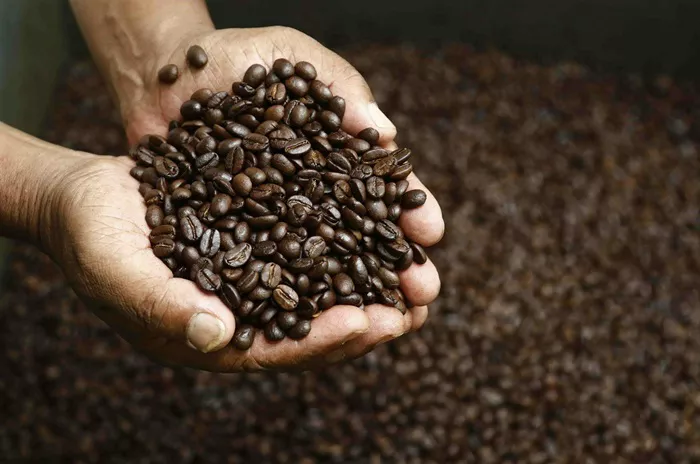Coffee prices have seen notable gains today, with December Arabica coffee (KCZ24) up 1.20%, or +3.05, and January ICE Robusta coffee (RMF25) increasing by 2.40%, or +105.
The rise in Arabica prices is attributed to ongoing weather concerns in Brazil, particularly in Minas Gerais, the country’s largest Arabica-producing region. Meteorologists predict that the region will continue to experience hot and dry conditions, potentially lowering coffee yields and production. In addition, Robusta coffee prices are benefiting from a report by Vietnam’s General Department of Customs, which showed a significant drop in coffee exports. October’s coffee exports from Vietnam fell by 11.6% from the previous month, and the country’s exports from January to October were down 11.1% compared to the same period last year.
Weather Threatens Coffee Yields in Brazil
In Minas Gerais, which produces the bulk of Brazil’s Arabica coffee, weather conditions have been a key factor in the price increase. Climatempo, a meteorology service, forecasted a return to hotter and drier conditions in the coming days following brief rainfall earlier this week. Last Thursday, Arabica coffee prices surged to a 3-1/2 week high, while Robusta coffee prices reached a 1-1/2 week high, spurred by concerns that adverse weather conditions in both Brazil and Vietnam could significantly affect global coffee production.
Brazil has been grappling with severe drought conditions, the worst since 1981, with rainfall levels consistently below average since April. This has led to damage during the critical flowering phase of coffee trees, threatening the prospects for Brazil’s 2025/26 Arabica crop. The country’s natural disaster monitoring center, Cemaden, has flagged this as a major risk to future production.
Vietnam’s Coffee Export Decline Adds Pressure to Robusta Prices
In Vietnam, heavy rains could also disrupt the coffee harvest. As the world’s largest producer of Robusta coffee, Vietnam’s coffee harvest is critical to global supplies. The country’s coffee production has already been hit hard by drought, and recent reports suggest that the crop size for the 2023/24 season has dropped by 20%, marking the smallest harvest in four years. The USDA also projects a slight dip in Vietnam’s Robusta coffee production for the 2024/25 season.
Brazil’s Coffee Production Forecast Cut
Brazil’s coffee output forecast for 2024 has also been reduced. The country’s crop forecasting agency, Conab, lowered its 2024 coffee production estimate to 54.8 million bags, down from a previous forecast of 58.8 million. This revision adds further support to global coffee prices, with concerns about lower-than-expected production in the world’s largest coffee exporter.
Global Coffee Surplus and Inventory Levels Offer Mixed Outlook
On the bearish side, the International Coffee Organization (ICO) reported a 25% year-on-year increase in global coffee exports in September, totaling 10.76 million bags. Additionally, global coffee exports from October to September rose by 11.7% compared to the previous year, leading to concerns about a larger global supply of coffee.
Recent rainfall in Brazil’s Arabica-growing regions, including Minas Gerais, has also raised doubts about the potential impact on the crop. Somar Meteorologia noted that the region received 123.9 mm of rain last week, well above the historical average. While beneficial for some crops, the excess rainfall may negatively impact coffee production in the area.
Inventory Levels Provide Some Support to Prices
Coffee inventories are also playing a role in supporting prices. ICE-monitored Arabica coffee inventories recently climbed to a 1-1/2 year high of 863,440 bags, following a recovery from a 24-year low in November 2023. Meanwhile, ICE-monitored Robusta coffee stocks have fallen to a 6-1/4 month low of 3,857 lots, following a rise earlier in the year. Despite fluctuations, these inventory levels continue to offer some support to coffee prices, as tight supplies remain a concern.
Brazilian Exports and Global Supply Projections Weigh on Prices
While Brazil’s coffee export numbers have been strong, this could ultimately weigh on prices. In September, Brazil’s green coffee exports rose by 34% year-on-year, totaling 4.1 million bags. Additionally, Brazil’s total coffee exports for the 2023/24 season increased by 33% to a record 47.3 million bags.
In terms of global production, the ICO has projected that the 2023/24 coffee season will see a 5.8% increase in production, reaching a record 178 million bags. The organization also forecasts a slight surplus, with global coffee consumption expected to rise by 2.2% to a record 177 million bags.
USDA Report Indicates Potential for Increased Global Production
The USDA’s June bi-annual report forecast a 4.2% year-on-year increase in global coffee production for the 2024/25 season. The report projects that Arabica production will rise by 4.4%, while Robusta production will see a more modest 3.9% increase. Brazil is expected to see a 7.3% increase in Arabica production, thanks to higher yields and increased planted acreage. Additionally, Colombia, the world’s second-largest Arabica producer, is projected to see a 1.6% increase in its coffee production for the 2024/25 season.
Overall, coffee prices remain supported by concerns over adverse weather conditions in key growing regions and tighter inventories, but reports of larger-than-expected global supplies may dampen the bullish sentiment in the longer term.
Related Topics:
- Vietnam Coffee Sets Export Record, Awaits EU’s $48 Billion Decision
- A Safe Space for Veterans to Reflect Over Coffee
- Armeno Coffee Roasters celebrates 30 years of coffee excellence


